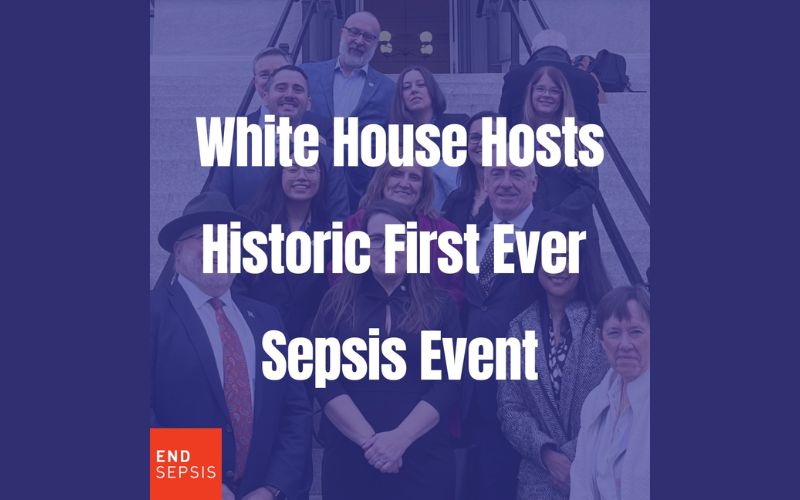The White House Office of Science and Technology Policy hosted an event designed to drive action on sepsis and reduce associated mortality and morbidity.
In a major victory for sepsis campaigners in the United States, the White House hosted its first-ever event solely dedicated to the issue of sepsis. Sepsis is a major public health crisis, killing 350,000 Americans annually and leaving hundreds of thousands of survivors with life-changing disabilities.
Orlaith Staunton, Founder and Executive Director of END SEPSIS, delivered the opening remarks on behalf of patients and families. END SEPSIS, the Legacy of Rory Staunton, was founded in 2012 following the preventable death of Orlaith and Ciaran Staunton's 12-year-old son due to undiagnosed, untreated sepsis.

END SEPSIS makes history.
The White House Office of Science and Technology Policy's event brought together leaders from state health departments, advocates, physicians, researchers and administration officials. It was designed to galvanize public and private sector action around early sepsis recognition and treatment.
The event was spurred by the release of the Agency for Healthcare Research and Quality’s Report to Congress, “An Assessment of Sepsis in the United States and its Burden on Hospital Care. END SEPSIS advocated for the creation of this report to better understand and quantify the toll of sepsis on the nation’s healthcare system, economy and population.
Read more
"This event is a major victory for the sepsis families who have campaigned to have the White House become more proactive on an issue that kills 350,000 Americans annually. We have intensely lobbied the current and past two administrations to do this; we are gratified that our hard work has finally borne fruit,” says Ciaran Staunton, Co-Founder of END SEPSIS.
The goal of the event was to serve as a call to action to all those who can play a part in reducing sepsis mortality and morbidity and drive hospital, state and national solutions to the sepsis crisis. Attendees discussed how to elevate best practices and build momentum for continued public and private sector action around early diagnosis and treatment. It emphasized the needs of at-risk subpopulations, including rural America, the elderly, pregnant women and immunocompromised patients with cancer and COVID-19.
The event also reviewed the current state-based sepsis programs, including Rory’s Regulations in New York, the nation’s first and most effective mandatory protocol requirement. The protocols saved 16,000 lives in their first four years of operation.




Comments